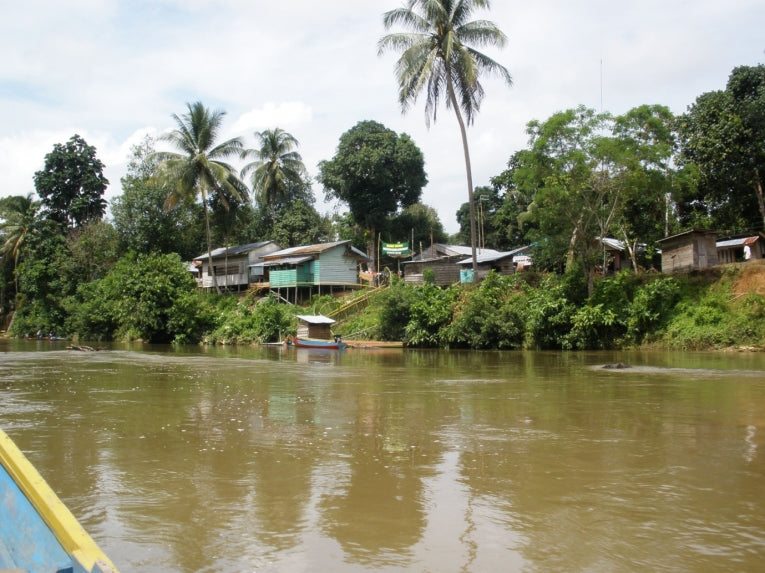The explanation of why Africans never got to Madagascar has been the cruel Agulhas Current and the huge distance across the Mozambique Channel. Nobody has done the opposite and explained who exactly did found the successful colonisation of an Asian community throughout the giant island. Prehistoric migrations in Asia and elsewhere still cause blood to stir and even boil as genomics gets down to the nitty-gritty of human ancestry. Fresh from the Maori settlements and many other significant migrations, these authors have finally nailed the ladies who formed the backbone of Malagasy civilisation! Murray Cox from Massey University in New Zealand and colleagues from Tucson, Arizona, Toulouse and Djakarta screened genetic variation leading to a revelation about the initial colony, proposed to be only 1200 years ago.
Already, ethnographic links have pointed to some small African influence but a basic Indonesian peopling of the island. No records have ever been found in Madagascar, unlike other Roman or Arab mentions for various Indian Ocean locations. Al Idrisi is the first to note the country in 1165 and Ibn Majid records, "Madagascar borders on the inhabited regions of the world," even as late as the fifteenth century. The first great European explorer, Vasco de Gama, also mentions the Malagasy civilisation, in 1497.
The Austronesian language has been a great guide even to Al Idrisi, enabling both him and the infamous Jesuits to pinpoint Indonesia as the origin of Malagasy peoples. South-east Borneo has the Ma'anyan language, restricted now to ethnic Dyak tribes. This has been supposed to be the linguistic root of Malagasy language, but there are many more Indonesian languages rooted in Malagasy. The Srivajaya empire ruled the linguistic root area from the 6th till the 13th century, allowing many cultural influences from throughout the extensive Indonesian archipelago.
Now genetics has rescued the arguments and provided evidence. Polynesian DNA (mitochondrial) from remote Oceania and Y chromosome "haplogroups" from south-east Asia and Oceania give "spice to the Malagasy mix. What the authors did is to analyse all of the Indonesian sources in detail, then use Madagascan research material from Mikea hunter-gatherers, semi-nomadic Vezo fishermen and the most numerous Andriana Merina group.

An Indonesian lady; Credit: © Francois Ricaut
The Polynesian mtDNA is variable in the population of Madagascar, but at 22% overall and originates in the islands of Indonesia the Andriana Merina show it higher at 50%. Because two additional mutations occur only in the Malagasy people, it has been termed the Malagasy motif. Only 2% of Indonesian samples carried the Polynesian motif and none, of course could have the Malagasy motif, developed on the island (or in the colonisers.)
Four possible models suggested themselves, of which the most probable suggests:
1170 years ago SETTLEMENT
30 women POPULATION
95% ASIAN ANCESTRY
The recent colonisation probably helps a lot, but the conclusion can only be that east African Bantu contact has been limited, despite some language evidence. The only genetic evidence concludes that the African admixture must have been early or possibly immediate, perhaps around 830 AD. That links the colony with Srivijaya trading expansions, peaking in the 9th century, but lasting until the 13th.
This is where the Maori example comes in. Only 70 women were thought to colonise New Zealand.
Hypothesis steps in with Indonesian traders organising a single colony. If the event were repeated, the same source population would have been used. Unfortunately, no women were normally carried on boats by the peoples concerned. The Malagasy ranto infers population sources from Indonesia, and needs to be investigated as an oral tradition likely to come up trumps! If a trading colony ever succeeded, or if refugees escaped the Srivijaya regime, we would have no record of it from alien writers. An unintended voyage seems attractive, partly because recent wrecks have washed up on Madagascar from the Javan area. At 500 tonnes, large cargo ships could have landed the necessary ladies for a Malagasy colony. Their fate was to found a nation on the last part of Earth to be colonised by humans. The unique flora and fauna can confidently be compared now to the truly unique people of Madagascar.
The full research paper has been published in the Proceedings of the Royal Society B: Biological Sciences journal today.










